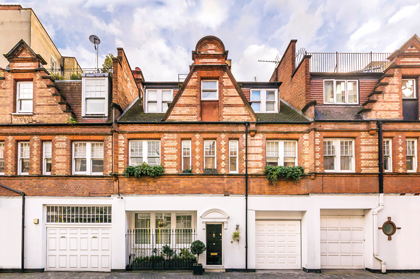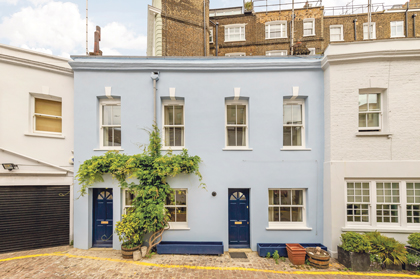The mews house was originally built as secondary accommodation for horses and staff in London but now, in the 21st Century, such properties are much sought after.
Tucked away from busy thoroughfares, a pretty mews house in a tranquil location, a stone’s throw from the buzz of the capital, is highly prized. Prospective buyers may be intrigued by the rich, if chequered, history behind these desirable homes.
The very first mews dates back to the late 14th Century. In Richard II’s time, the royal hawks were kept at what was known as the King’s Mews at Charing Cross, on the present site of the National Gallery. The word ‘mew’ means moulting; the birds were not used for hunting while their feathers moulted and so remained in the ‘mews’. In 1534, when Henry VIII was on the throne, the building was destroyed by fire and, when it was rebuilt as stables, the name was retained.
In the 18th Century, when the wealthy first inhabited areas such as Mayfair, Hyde Park, Kensington and Marylebone, they needed staff and stabling, and mews were built as service roads behind the Georgian squares and terraces.
The typical mews house incorporated a stables and coach house on the ground floor with a hayloft and accommodation above. The buildings were situated next to the gardens of the grand houses they served and had no windows at the back, to prevent staff from observing their employers taking the air. To accommodate horses’ hooves, the mews street was constructed of hard-wearing cobbles which have a quaint appeal today.
James Staite, Director of Dexters Marylebone, says, “Mews properties, which usually have two or three bedrooms, are attractive to people looking for a central location that’s quiet. Mews houses offer privacy, so we get enquiries from famous people who are looking to tuck themselves away and, because there are often garages, from people who want to house a nice car or motorbike.”


By the end of World War II, the mews had become less of a necessity: the use of horse and carriage declined with the advent of the motor car and, as society became more equal, the servant population decreased. Many mews fell into disrepair and some were bought or rented by motor mechanics and taxi firms.
During the swinging sixties, London became the place to be and the mews house became an affordable way for the fashionable to live in the best areas of the capital. Properties could be acquired for reasonable sums and began to be converted into private homes.
Michael Caine lived in a Hyde Park mews during the sixties when he made his famous films Alfie and The Italian Job. Scandal hit Wimpole Mews in Marylebone after Christine Keeler moved in and began her affair with the war minister John Profumo which rocked the government in the early sixties. Scenes from The Italian Job were filmed in Denbigh Close, a mews in Notting Hill, and, in more recent times, a fabulous pink property in St Luke’s Mews in Notting Hill had a starring role in the movie Love Actually.
Mews properties can be freehold or leasehold and although access to a garage can be a bonus, they don’t usually possess gardens. Owners will often add outdoor space with a roof terrace or balcony.
Most mews properties are in Conservation Areas which means there may be restrictions on what can be done to the facade. However, creativity can be expressed inside and owners sometimes dig down to add a new floor. Staite says, “One mews house was like a stately home inside, with traditional oil paintings and rugs, but the basement was styled as a glitzy 1980s nightclub. In Connaught Village, just north of Hyde Park, I even saw a mews house with a swimming pool in the basement.”

